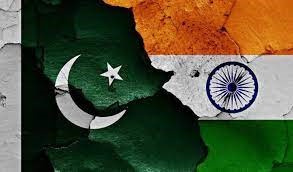by Zukhruf Amin 6 June 2022
Twenty-four years ago, Pakistan and India tested their nuclear devices, sparking the most discussed nuclearization of South Asia. The security landscape of the region changed drastically when nuclear weapons were introduced which restored the regional stability. Pakistan and India’s nuclear program has evolved over the last many decades, keeping in view the security concerns of Pakistan in the face of hegemonic ambitions of India. India had carried out its nuclear tests terming them the so-called Peaceful Nuclear Explosions (PNE). However, after conducting five tests on May 11 and 13, it declared itself a nuclear state in May 1998. Having driven by the security concerns emerging out of the Indian tests, it was advocated that Pakistan should have its own nuclear weapon. Despite the constant global pressure to not follow suit, Pakistan successfully conducted six nuclear tests on May 28, 1998, becoming the first nuclear weapon state in the Muslim Ummah. The core objective of nuclear deterrence is to avert a war unlike conventional deterrence that does not preclude the possibility of use of force. Considering it as a peaceful strategy and its incontestable nature, nuclear deterrence has had a major role in the South Asian crisis e.g., the Exercise Brasstacks 1986-87 and the Balakot Crisis 2019.
In the post nuclearization period, the presence of nuclear weapons has a significant impact on the behavior of both India and Pakistan, to restrain them from moving up on the escalation ladder e.g., during the Balakot Crisis in 2019. During the crisis, the conventional deterrence was restored despite the asymmetry in the conventional capabilities between both the states. Hence, an all-out war remains an unthinkable option between Pakistan and India. Moreover, Pakistan’s Full Spectrum Deterrence in response to the India’s Cold Start Doctrine eliminates all forms of threats that includes operational, strategic and tactical threats. So, it is rightly termed as a full spectrum of threats.
South Asian security environment is largely influenced by Pakistan and India’s relations. The growing appetite for advanced military equipment and its strategic partnerships with the West has created a serious security dilemma in this regard. Some reports highlight that India remained the largest importer of arms from 2017-2021. Not only this, the kind of destabilizing weaponry that the Indian side is developing including Ballistic Missile Defence (BMD) System is likely to lead to instability in the region. Even though the latest S-400 missile defence system which India is acquiring from Russia is not a battle proven system and its advertised capability is mostly overstated by the Indian side. However, a BMD capability in the presence of conventional and nuclear asymmetries can compel either of the state to go for a first-strike in a crisis situation, challenging the strategic stability. The outstanding issues between both the states are another factor of destabilizing the neighborhood.
Kashmir remains at the core between the two states and is likely to remain a nuclear flashpoint particularly in the aftermath of abrogation of its special status. In such a scenario, acquiring disruptive technologies and an increased military modernization may lock Pakistan and India in an unabated arms race. The Indian military adventurism and its shift towards a pre-emptive strike doctrinal posture, indicating its counterforce temptations suggest that India is looking for a crisis-like situation to destabilize the region. The consequences would be destructive for a region that has a history of wars. Pakistan’s decision of going nuclear therefore justifies its policy of countering any Indian jingoism and warmongering. It has acted responsibly ever since nuclear weapons have been tested in the region. It acquired the relevant technology to maintain minimum deterrence capability in all three domains i.e., land, air and sea. There is also a need to ensure credibility, capability and communication to restore strategic stability in South Asia. It is because in a nuclear neighborhood, there is a possibility of escalation to nuclear level where it can impact the security landscape. The inadvertent escalation will also lead to a catastrophe because of the large urban population of the two nuclear armed rivals. So, given the doctrinal postures of India and Pakistan, it is claimed that nuclearization of South Asia in 1998 led to strategic stability in the region, that has been experienced in these twenty-four years.

